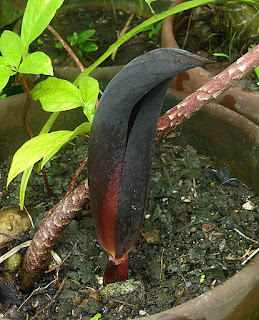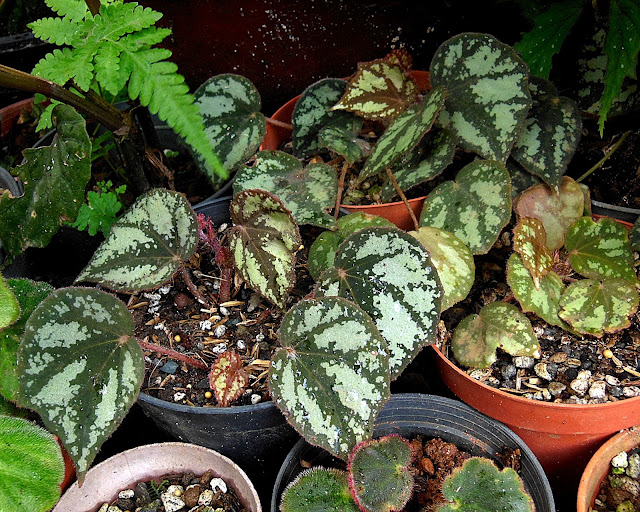Of cats and Amorphophallus pots

Allow me to begin by categorically stating that I love cats. And there are currently three in the house living their merry ways as much and as often as they want. But let's admit it, not everything about them is rosy. Sometimes it's also the color of poop. I have a number of plants that go dormant in preparation for next season's growth, mostly Amorphophallus , but also terrestrial orchids, gingers, gesneriads, Dracontium , Gloriosa , and Tacca leontopetaloides . Unfortunately for these plants and their napping tubers/rhizomes, the cats see their 'empty' pots as open invitations to take a dump to. Which is why you see these pots bristling with plastic utensils, in the hopes that barriers such as these are enough to dissuade cats from dropping their unwelcome payloads. What is the batting average, you may ask. For about ten pots, none gets a generous dosage of cat crap. But the law of averages begin to swing unfavorably when we start talking of more than ten po




